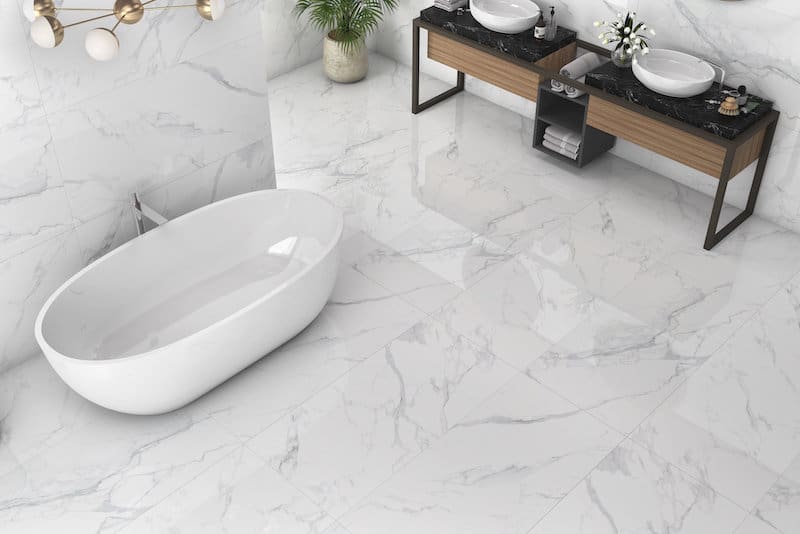
interior visualizer/Shutterstock
Bathroom Floor Design Ideas for a Luxurious Space
Though today’s interior design magazines may give an alternative impression, bathroom flooring as art dates back to the time of the ancient Romans, if not further. Beginning with the gorgeously ornate mosaic tiles of villas and spas, and arguably reaching its peak during the Art Deco period, bathroom floor decor has only just begun to make headlines in crucial interior design guides.
A superbly crafted bathroom floor is what separates a home from a crash pad; it is the mark of the gentleman who understands the necessity of details, however inconsequential, and tends to them with an unforced but undeniably refined eye. Modern bathroom flooring first pays homage to bygone artisans—then takes it one step further into the next era.
From Morocco to the Pacific Northwest, updated bathroom floor design inspirations are truly globe-spanning masterpieces of quality and eye appeal. While tile “carpet” designs add a bit of the boutique hotel vibe, raw stone, copper pennies, and abstract layouts compliment the contemporary abode. Funky beach tiles give the space-constricted apartment a Malibu bungalow feel, while black and white subway tiling keeps you in true metropolitan mode.
The bathroom is more than just a utilitarian necessity, it can also be a luxurious retreat and a chance to pamper yourself before braving the world outside. From ceiling to floor, there is no detail too casual to consider, and what better place to start than the floor you tread upon morning, noon, and night?
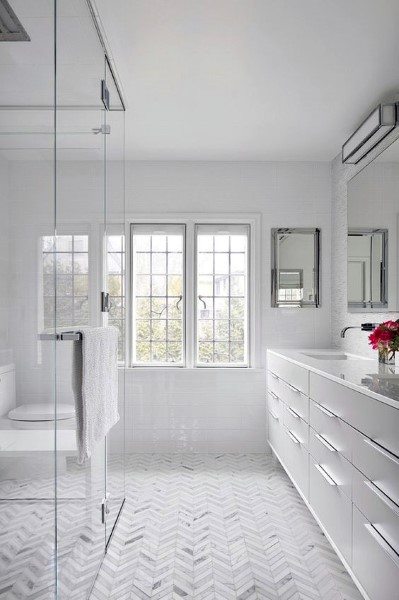
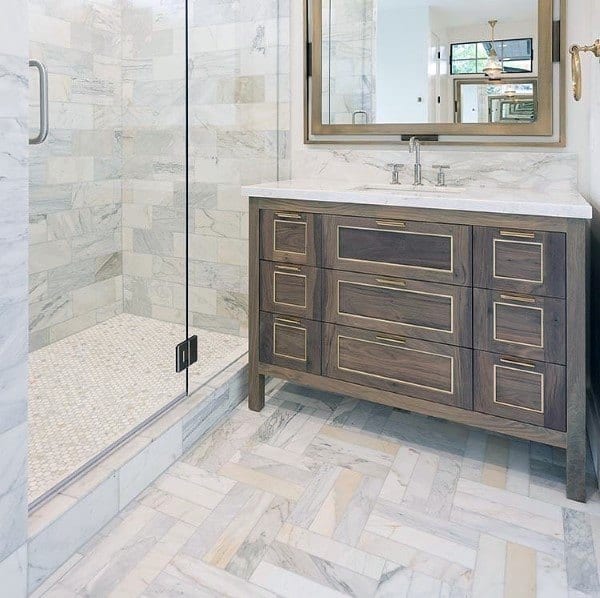
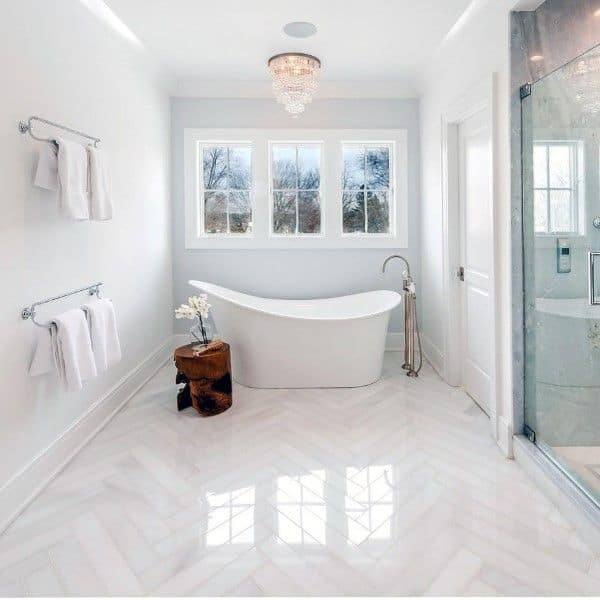
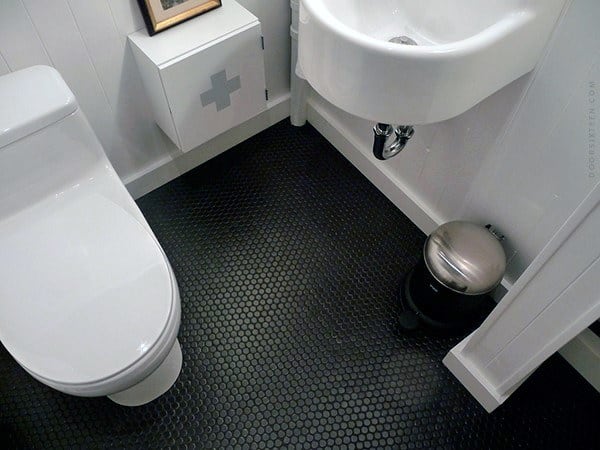
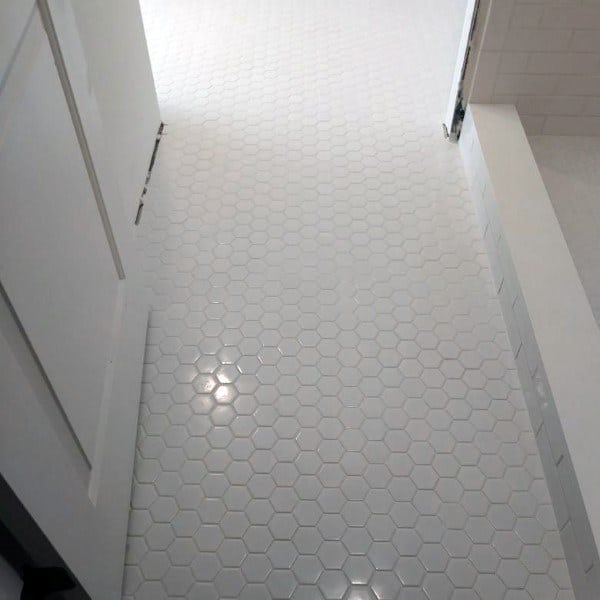
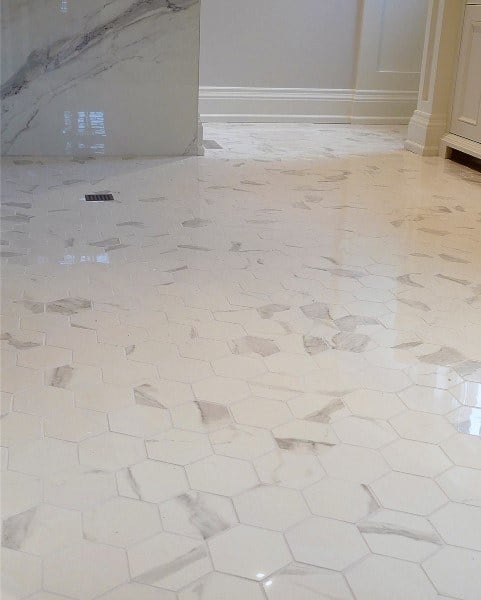
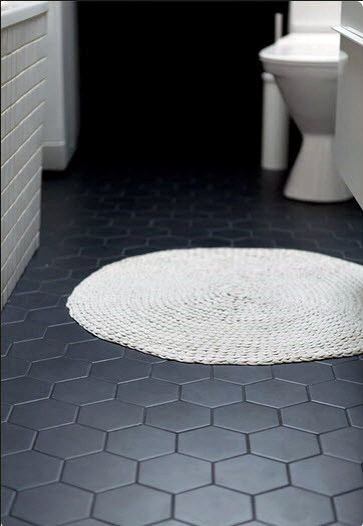
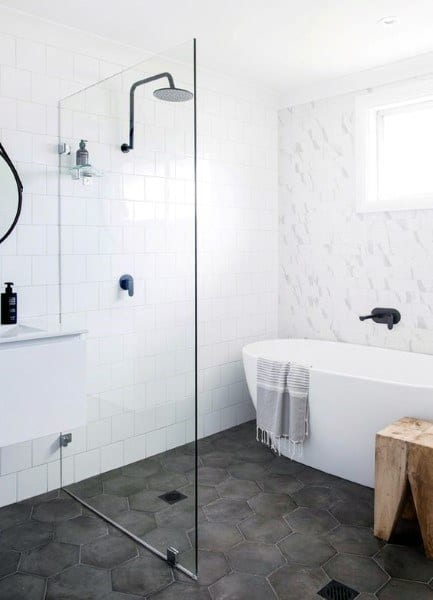
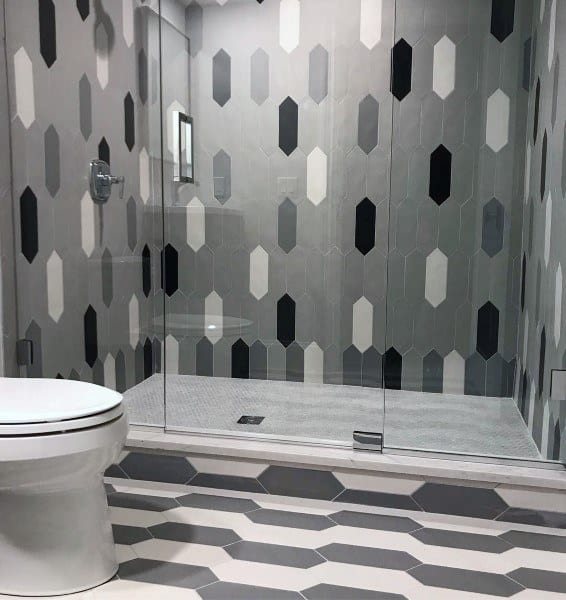
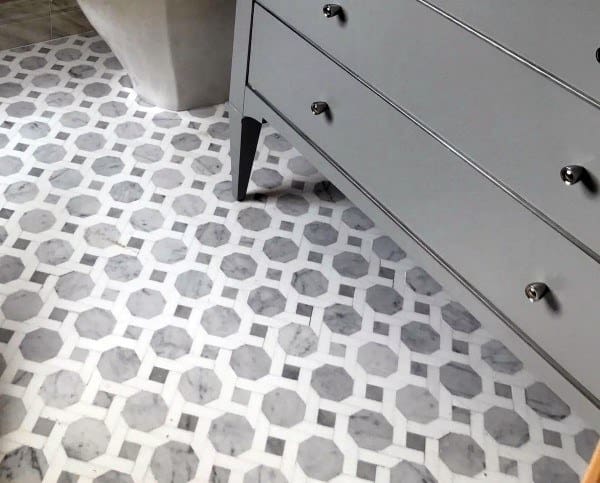
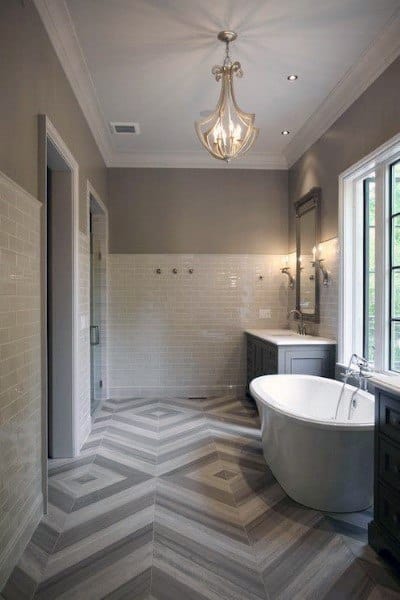
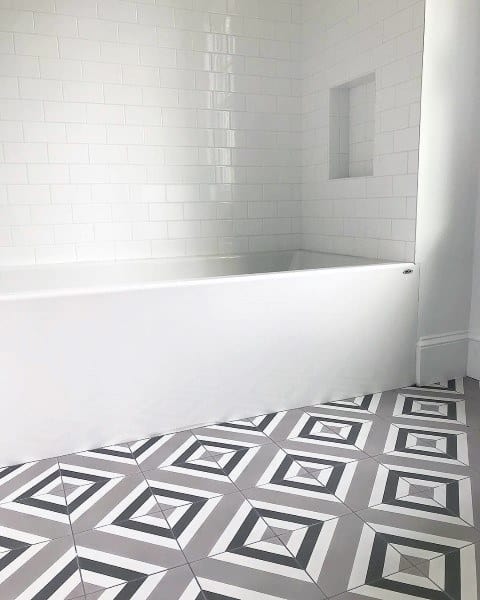
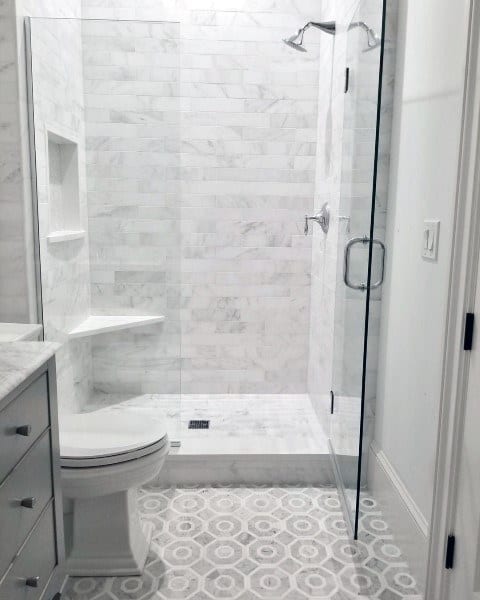
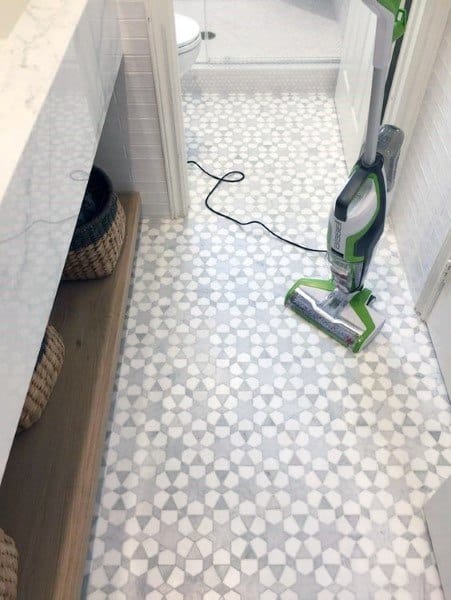
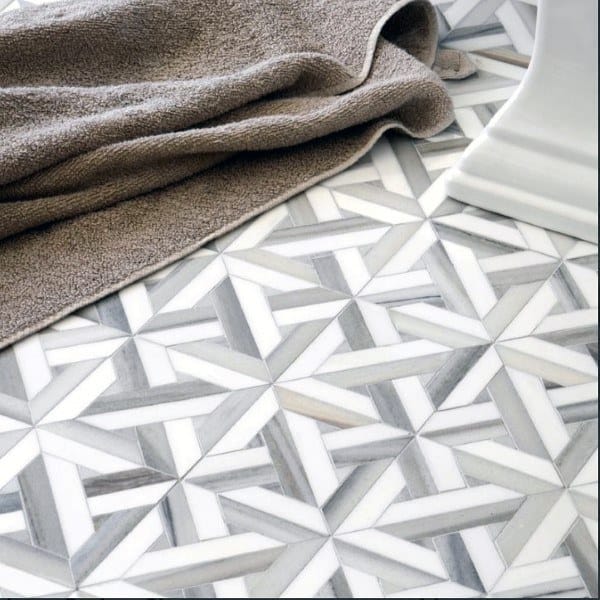
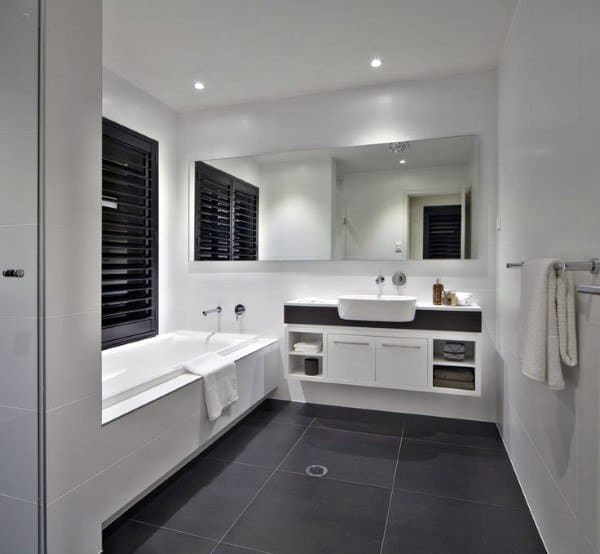
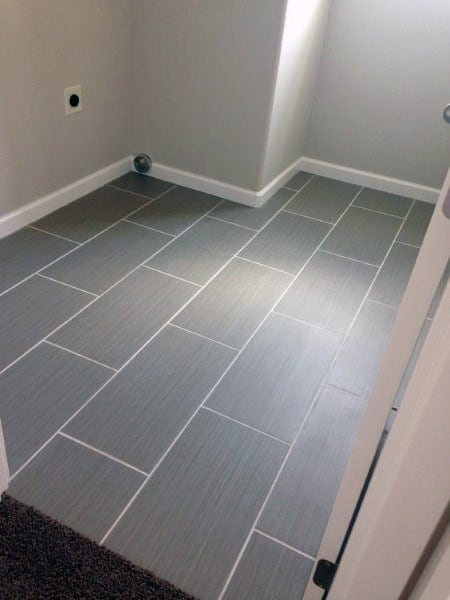
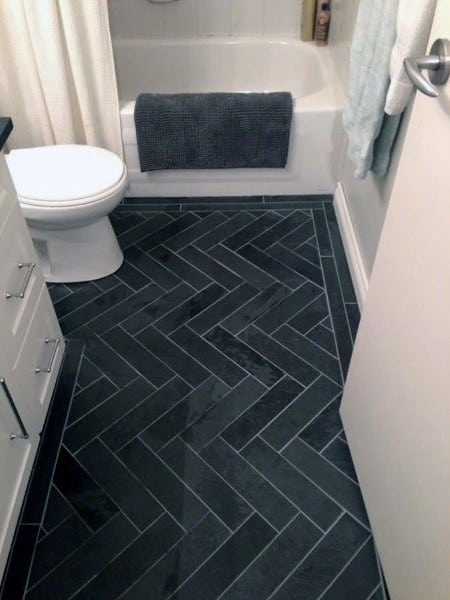
Best Bathroom Flooring Options to Consider
1. Vinyl Flooring
Benefits:
- Waterproof: Ideal for bathrooms due to its resistance to moisture.
- Affordable: Vinyl is cost-effective compared to other flooring types.
- Easy to install: Many vinyl options come with peel-and-stick or click-lock installations.
- Variety: Available in a wide range of styles, colors, and patterns.
Disadvantages:
- Durability: Prone to scratching and denting over time, especially in high-traffic areas.
- Not as eco-friendly: Vinyl is made from synthetic materials, which may not be the best choice for eco-conscious homeowners.
Cost: Typically ranges from $1 to $5 per square foot, depending on the quality and style.
2. Porcelain or Ceramic Tile
Benefits:
- Water-resistant: Both porcelain and ceramic tiles are highly resistant to water.
- Durability: These tiles are very durable and can last for decades if properly maintained.
- Variety: Available in numerous designs, including natural stone looks, patterns, and sizes.
Disadvantages:
- Cold underfoot: Tiles can be uncomfortable to stand on, especially in colder climates.
- Grout maintenance: Grout lines can stain over time and require regular cleaning or resealing.
- Installation cost: Professional installation can be expensive due to the time and skill required.
Cost: On average, porcelain and ceramic tiles range from $2 to $10 per square foot, with higher-end designs going beyond this range.
3. Natural Stone (Granite, Marble, Slate)
Benefits:
- Luxurious appearance: Natural stone offers a high-end look that can increase your bathroom’s appeal.
- Durability: Stone is incredibly durable and can withstand heavy traffic.
Disadvantages:
- High maintenance: Needs sealing to prevent staining and water absorption.
- Expensive: Natural stone flooring is one of the most expensive options available.
- Cold and slippery: Like ceramic, natural stone can be cold underfoot and slippery when wet.
Cost: Natural stone floors can range from $5 to $20+ per square foot, depending on the type of stone and quality.
4. Waterproof Laminate Flooring
Benefits:
- Affordability: Waterproof laminate is a budget-friendly option with a wide range of styles.
- Durability: Resistant to scratches and stains.
- Easy to maintain: Requires only regular sweeping and occasional mopping.
Disadvantages:
- Moisture issues: While waterproof versions exist, older laminate options can warp and peel when exposed to excessive moisture.
- Not as luxurious: While it can mimic the look of natural materials, laminate doesn’t have the same upscale feel.
Cost: Typically ranges from $1 to $5 per square foot.
5. Cork Flooring
Benefits:
- Eco-friendly: Cork is a renewable resource and environmentally friendly.
- Comfort: Soft underfoot and warmer than tiles or stone.
- Water-resistant: Cork is naturally water-resistant but should be sealed for additional protection.
Disadvantages:
- Maintenance: Needs sealing to protect against water and stains.
- Vulnerable to damage: Can be scratched or dented easily if not properly maintained.
- Not as common: Fewer options available in terms of style.
Cost: Usually ranges from $3 to $7 per square foot.
FAQs
How do I choose the right floor tile size for my bathroom?
Selecting the right tile size depends on the dimensions of your bathroom and the overall design goals. For smaller bathrooms, opting for smaller tiles, such as mosaic or 12×12-inch tiles, can make the space appear more expansive and less cluttered. On the other hand, larger bathrooms can handle bigger tiles, like 18×18-inch or 24×24-inch tiles, which can create a seamless and modern look.
It’s essential to consider the balance between tile size and the proportion of your bathroom, as well as the visual effect you want to achieve. Experiment with different sizes and layouts to find the best fit for your specific bathroom space.
What are the benefits of using luxury vinyl flooring in bathrooms?
Luxury vinyl flooring offers several advantages for bathroom applications. Firstly, it provides a high level of water resistance, ensuring it can withstand frequent exposure to moisture without warping or damage. Additionally, luxury vinyl comes in a vast array of designs and patterns, including options that mimic the appearance of natural materials like wood or stone. This versatility allows you to achieve the desired aesthetic for your bathroom without sacrificing functionality.
Moreover, luxury vinyl is softer and warmer underfoot compared to traditional ceramic or stone tiles, adding a touch of comfort to your bathroom experience. Its ease of installation and relatively lower cost also make it a popular and practical choice for bathroom flooring.
Can I install heated flooring in my bathroom?
Yes, installing heated flooring in your bathroom is a great way to add comfort and luxury to the space. Heated floors provide a consistent and gentle warmth underfoot, making chilly mornings much more bearable. There are two primary types of heated flooring systems: electric radiant heat and hydronic (water-based) radiant heat.
Electric systems are easier and less costly to install, making them a popular choice for bathroom applications. However, if you’re planning a bathroom renovation or building from scratch, a hydronic system integrated into the overall heating system of your home can be a more energy-efficient option in the long run. Be sure to consult a professional to determine the best type of heated flooring for your specific bathroom layout and needs.
